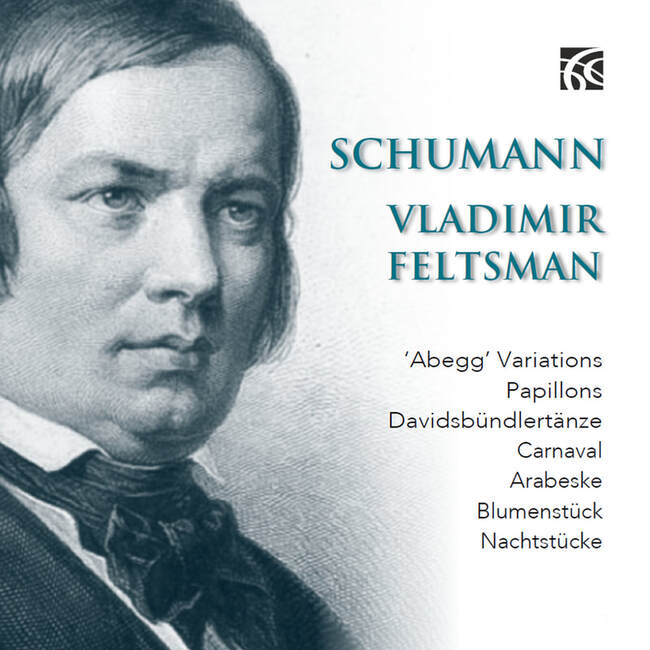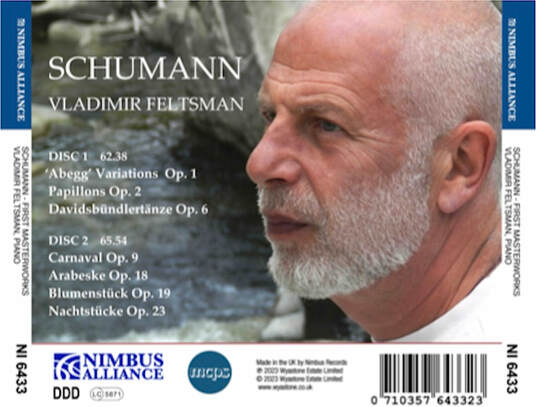
Variations on the name “Abegg” Op. 1 was written by the 20-year-old Schumann in 1830 and dedicated to the fictitious “Countess Pauline von Abegg”, whose last name provided Schumann with the theme for his variations – A, B-flat, E, and double G. Abegg Variations is a delightful, unpretentious, and elegant work free of the care, tension, and unresolvable conflicts that would haunt Schumann for the rest of his creative and personal life.
Papillons (Butterflies) comprises eleven seemingly unrelated parts and a grand finale that brings back the main tune (a waltz) of the opening piece, creating an arch that binds the set together. Like a phantasmagorical theatrical vision, the parts follow each other in a rapid succession, each having its own special character, texture, purpose, and expressiveness.
Davids bündlertänze ('Dances of the League of David') Op. 6 was written in 1836. It includes 18 pieces grouped in two volumes of 9 pieces each. One of the most complex and sophisticated of Schumann’s works, it vividly articulates his essential creative principles, imagination, and unique approach to composing. It is a real artistic manifesto, a self-portrait of the artist.
Carnaval (Carnival), Op. 9 was written during 1834-35. Its twenty-one short pieces represent masked revellers during Carnival, the festive season that precedes the austerities of Lent. The music is filled with cryptograms, riddles, humour and misdirection, as if he was teasing the future ‘readers’ of his works, challenging them to figure out what is really going on and why; as he wrote, ‘deciphering my masked ball will be a real game for you’.
Arabeske (Arabesque) is a subtle, intimate and unpretentious work, beautifully crafted. The main episode is presented three times without any alteration. The two middle episodes are contrasting in character, and the conclusion is dreamy and hushed. Blumenstück has five thematic episodes (five petals), the second of which is presented three times, making it an eight-petalled flower. The form is unique and not easy to define—it just is a flower (‘A rose is a rose...’).
Nachtstücke Op. 23 ('Night Pieces') was written in 1839 and published a year later. The title Nachtstücke suggested the distinction between the vocalized romantic idioms associated with night music such as the nocturnes of Field and Chopin and Schumann’s much darker visions.
'Feltsman's Carnaval pivots adroitly among moods and tempos, capturing the unstable undercurrent of lyric passages especially well. The soloist colors the episodes vividly, from the coyness of Coquette to the crisp, dazzling Papillons.' Stephen Francis Vasta, Stereophile, April 2023
Electronic press kit available for review use.
|
|
|


